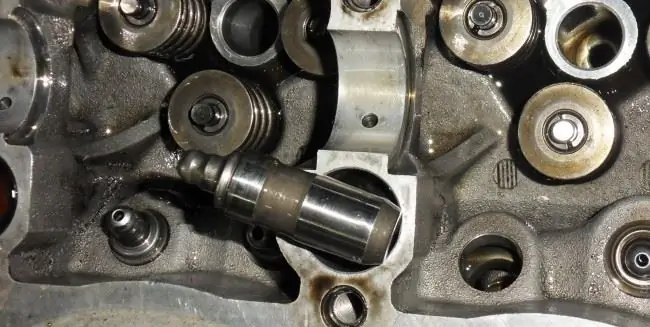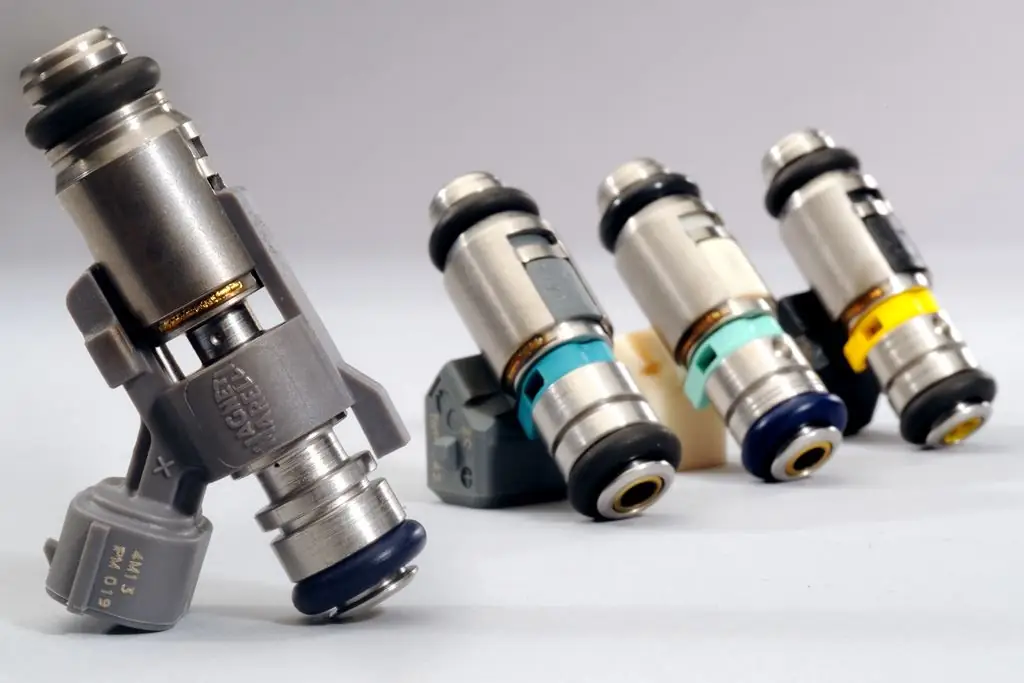2026 Author: Erin Ralphs | [email protected]. Last modified: 2025-01-22 21:14:16
Modern cars are equipped with various sensors, based on the readings of which the control unit regulates the operation of the entire unit. One such element involved in the fuel injection system is the knock sensor, the principle of operation of which is based on the piezoelectric effect.


The knock sensor is located on the car engine. It generates voltage pulses from detonation explosions in the engine. Based on the readings received from it, the control unit controls the fuel supply, thereby achieving maximum engine power and economical fuel consumption.
Types of knock sensors
There are two varieties of this device - broadband and resonant. But at present, the resonant knock sensor is no longer installed in series. You should also be aware that they are not interchangeable, so installing, for example, instead of broadband resonant will not work.
Operation principle
Sensor operation is based onpiezo effect. The controller sends a 5V DC signal to the sensor. It contains a resistor that reduces the voltage to 2.5V and returns an AC signal to the controller. The return signal is transmitted through the reference voltage receiving circuit. This is possible because the signal from the controller comes in the form of a DC voltage, and the return signal comes in the form of an AC voltage. When a detonation explosion occurs in the engine, the sensor generates an alternating current signal, the amplitude and frequency of which directly depend on the strength of the detonation. If, during normal operation of the engine, an AC signal with a voltage of 2.5V returns to the controller, the controller leaves the engine running in the current mode. If there are deviations from the set value in the received signal, then the controller changes the ignition timing to extinguish detonations and switch the engine to an economical and safe mode.
Check knock sensor

At home, the knock sensor and its performance can be checked with a multimeter. First of all, you need to disconnect the electrical block from it, and then unscrew it from the engine. We connect the tester to the sensor as follows: the red (positive) wire is connected to the contact in the connector, and the black (negative) wire is connected to the housing. To check the performance, it is necessary to lightly tap on the thread, as a result of which the knock sensor must produce voltage pulses of up to 300 mV, which it registersmultimeter. If voltage surges are not registered, then the sensor is faulty. If the multimeter picks up voltage after each impact, then you need to check the sensor connectors and wires. Very often, it is in poor contact that the lack of communication between the controller and the sensor lies, so the contacts should be cleaned. It is also necessary to check the wiring for an open circuit. It is possible that the cable just frayed somewhere or broke off.
Recommended:
The principle of operation of the variator. Variator: device and principle of operation

The beginning of the creation of variable programs was laid in the last century. Even then, a Dutch engineer mounted it on a vehicle. After such mechanisms were used on industrial machines
Valve knock: principle of operation, characteristics, causes of knocking, diagnostics and troubleshooting

The gas distribution mechanism is an integral part of any internal combustion engine. The timing system includes several elements, including valves. These parts contribute to the intake of a combustible mixture and the subsequent release of gases from the combustion chamber. On a serviceable motor, the valves should not make any sounds. But what to do if there is a knock of valves? The reasons for this phenomenon and methods for troubleshooting - later in our article
Temperature sensor in the VAZ-2115: principle of operation, design and verification

Compliance with the thermal regime of the engine is one of the most important conditions for its long-term operation. To control the temperature on the VAZ-2115, like on any other car, there is a pointer and a corresponding sensor. The failure of one of them can ultimately lead to overheating of the power unit. Considering the importance of the temperature sensor in the VAZ-2115 for the trouble-free operation of the engine, knowledge of its structure, location and verification procedure will not be superfluous
Knock is Where is the knock sensor located?

Knocking is a phenomenon in which the air-fuel mixture ignites spontaneously. At the same time, the crankshaft of the engine continues to rotate, experiencing enormous loads
Carburetor and injector: difference, similarities, advantages and disadvantages of carburetor and injection engines, principle of operation and expert reviews

For more than a hundred years, the car has firmly established itself in our lives. During this time, managed to become a familiar, everyday means of transportation. Let's see what the difference is between a carburetor and an injector, what advantages and disadvantages they have

